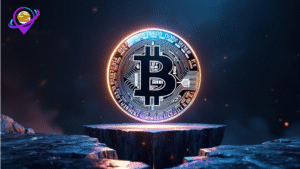Different Protocols, Different Valuations
Former Ripple director Matt Hamilton recently weighed in on the ongoing debate about why XRP commands a market valuation roughly twelve times larger than Chainlink. His perspective came as discussions resurfaced about the two cryptocurrencies’ relative worth, particularly after Swift’s blockchain announcement.
Hamilton argued that comparing XRP to Chainlink directly misses the fundamental differences between the two protocols. He explained that XRP serves as the native asset of the entire XRP Ledger network, which functions as a complete blockchain system. In contrast, Chainlink operates as a protocol where its token plays a more limited role within that specific framework.
I think Hamilton makes a valid point here. When you look at the underlying architecture, they’re built for different purposes. The XRP Ledger is designed as a settlement system with its own consensus mechanism and network infrastructure. Chainlink, meanwhile, focuses on providing oracle services to connect blockchains with real-world data.
The Swift Partnership Context
The discussion gained momentum after Swift announced it would integrate blockchain technology into its infrastructure, bringing over thirty financial institutions into the development process. Chainlink quickly highlighted its existing collaboration with Swift, pointing to the move as validation for blockchain and oracle networks in financial infrastructure.
This announcement prompted former Coinroutes Chairman Dave Weisberger to question the valuation gap. He noted that Chainlink’s partnership with Swift and its revenue-sharing model with token holders should theoretically support a higher valuation. Weisberger specifically questioned why XRP’s market cap stood at $173.35 billion compared to Chainlink’s $14.6 billion.
But perhaps the comparison isn’t as straightforward as it seems. Market valuations in crypto don’t always follow traditional business metrics. Sometimes network effects and adoption patterns create valuation disparities that don’t align with current partnerships or revenue models.
Community Perspectives on Value Drivers
The conversation revealed different views about what drives value for each asset. Weisberger suggested that XRP derives value primarily from scarcity and its small transaction burn mechanism. He expressed concern that if XRP’s price climbed too high, it might lose its advantage of being affordable for transactions.
However, WrathofKahneman, a prominent XRP community figure, countered this argument. He pointed out that XRP’s burn rate is minimal and doesn’t significantly impact its value proposition. More importantly, he argued that higher XRP prices actually improve its efficiency as a settlement asset, since transaction fees remain adjustable and minimal regardless of token price.
This brings up an interesting point about utility tokens versus network tokens. Chainlink’s value proposition centers around its oracle services and the revenue-sharing potential for token holders. XRP’s value, on the other hand, seems more tied to its role as a settlement asset within its own network ecosystem.
Looking at the Bigger Picture
What strikes me about this debate is how it reflects broader questions about crypto valuation methodologies. We’re still in early days when it comes to understanding what factors should drive cryptocurrency prices. Network effects, adoption rates, technological capabilities, and real-world utility all play roles, but their relative importance remains unclear.
Hamilton’s perspective suggests that being the native asset of a complete blockchain network carries different weight than being a token within a specialized protocol. This distinction might explain some of the valuation gap, though market sentiment and investor psychology certainly contribute too.
As the crypto space continues to mature, we’ll likely see more sophisticated valuation models emerge. For now, these discussions help clarify the different value propositions of various blockchain projects and why direct comparisons between fundamentally different protocols might not always make sense.






